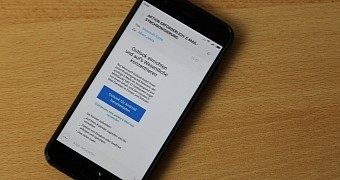Microsoft’s increased focus on Android and iOS has angered many hardcore Windows phone fans out there, especially because many of the apps that the company launched recently aren’t available on its own mobile platform.
The software giant, however, has made it very clear that Android and iOS are both considered to be priorities for the company because it wants all users to be able to access its services, no matter the platform they have embraced.
But this doesn’t mean that Microsoft isn’t adopting a more aggressive tactic to conquer Android and iOS.
A recent report from German site WindowsArea reveals a new behavior that Microsoft has implemented when Android users configure their Outlook.com accounts with their emails clients.
Outlook ad in Outlook.com?
Specifically, whenever an Android user sets up his Outlook.com account in whatever Android email client, including the default ones (such as the one offered by Samsung or Google’s Gmail), the company automatically sends an email to the user to highlight the Android version of Outlook.
Microsoft is betting big on the Android and iOS versions of Outlook, which is based on the email client developed by Accompli, a company that Redmond purchased nearly 2 years ago, and is continuously improving the apps to become more widely-adopted on rival mobile platforms.
So by emailing users to tell them about Outlook as soon as they configure their Outlook.com clients, the company hopes that more Android adopters would give its client a try, especially because the email contains information that’s specifically targeted at Microsoft users.
Are these ads? Is this unfair practice? No and no. First and foremost, this is barely an ad, because not only that the email can be removed in a second, but it’s not at all intrusive and only shows up once.
Then, what Microsoft does is promote its own products with its own service, which is completely free and doesn’t come with any in-app purchases. And when the email is only pushed once with options to remove it, this is hardly an ad.
Of course, there are users who do not agree with Microsoft’s tactic, but at the end of the day, Outlook is completely free and so is the company’s Outlook.com service.

 14 DAY TRIAL //
14 DAY TRIAL //